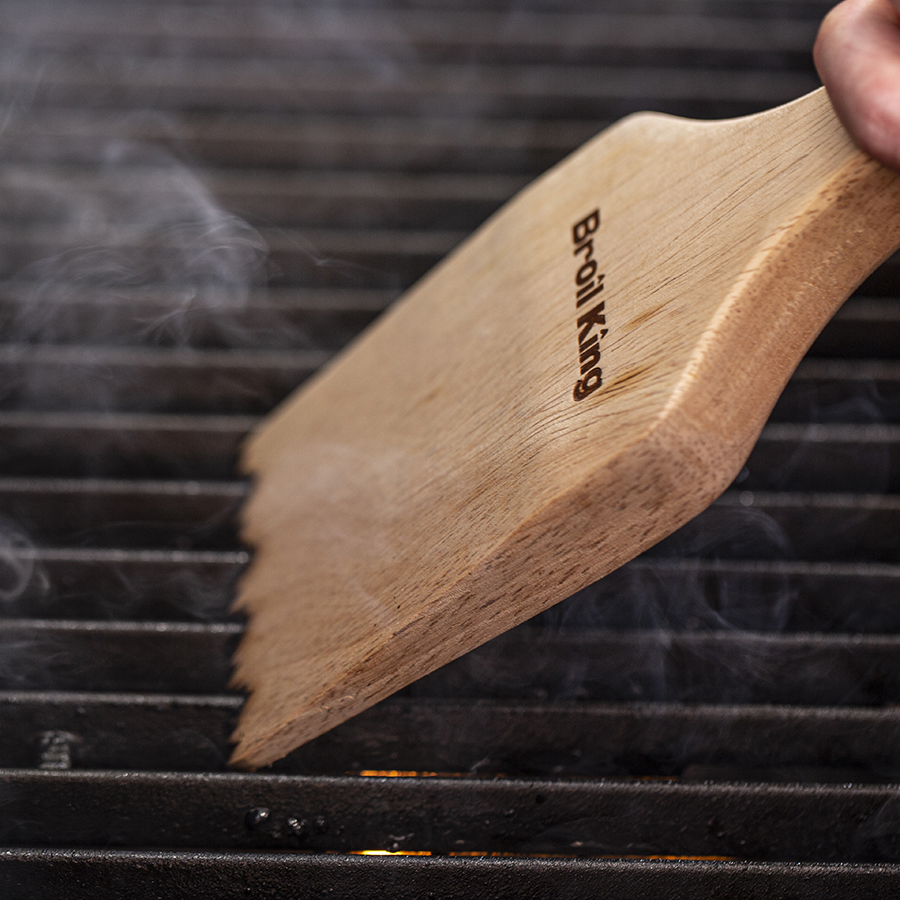Tips and Tricks | Barbecue Grate Care
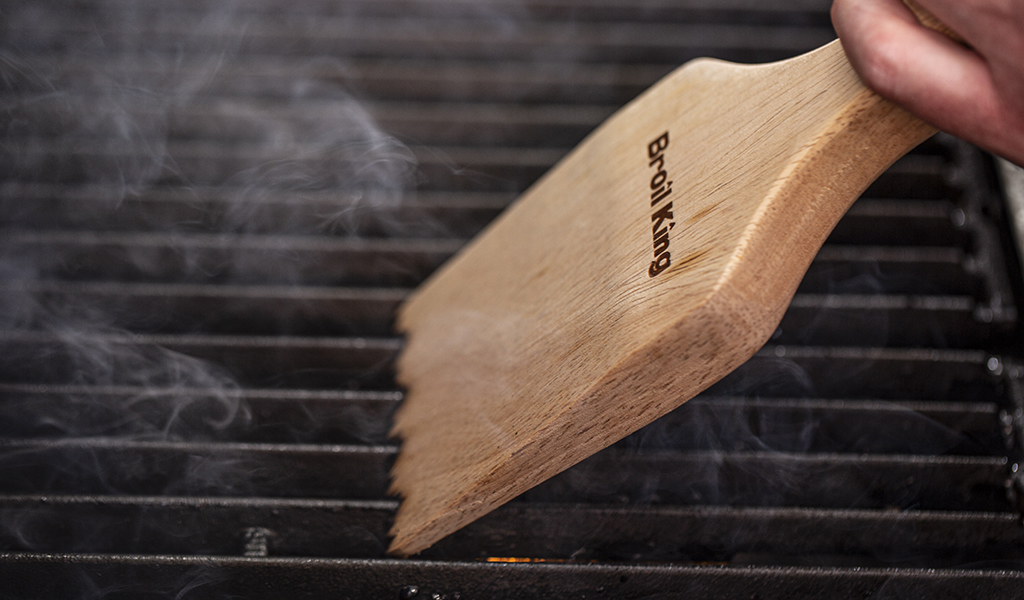
It’s easy to take for granted the cooking grates in your barbecue. After all, they sit outside in your grill all year long, ready for the next time you fire it up. They take a beating, exposed to extreme heat, moisture and lots of grease and grime. We give them a bit of a scrape if we notice a lot of food build-up, but we probably don’t treat them with nearly the same regard as any of our pots and pans that we use inside. But really, they need just as much care as any other cooking vessel to keep them sanitary and performing for years to come.
In this week’s blog, we will look at the three different cooking grate styles found in Broil King grills; we’ll go over the advantages of each and then how to properly maintain any cooking grate for optimal performance.
Grate Types
Cast Iron
The first cooking grate found in most of our grills is cast iron. From pellet grills, charcoal smokers, Crowns and more, this grate comes in different shapes and sizes and features dual cooking sides. Many top chefs favour cast iron in the kitchen for its heat retention and even heat distribution. Whether it’s a cast iron cooking grate, pot, or pan, they require special care and maintenance to keep them cooking and to prevent rust.
The biggest threat to cast iron is moisture from our food or humidity in the air, as it can penetrate the grids and cause rust. The most important step we can take to prevent rust is proper and regular seasoning, as the oil creates a protective barrier to block out moisture. We’ll go over the steps for seasoning shortly.

Stainless Rod
The second style of cooking grate is stainless rod, found in our Baron and Regal series of grills. The grids offer excellent searing power and have the added benefit of being rust-resistant. They’re easier to care for versus cast iron but still require good cleaning and seasoning habits for the best results.
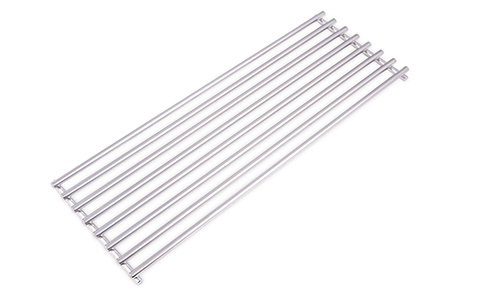

Cast Stainless
Finally, we have our cast stainless cooking grates. They combine the benefits of cast iron and stainless rod for exceptional performance. Cast stainless is rust-resistant and delivers outstanding heat transfer. They are also dual-sided for versatility. That said, they still need to be treated with oil to keep them pristine.
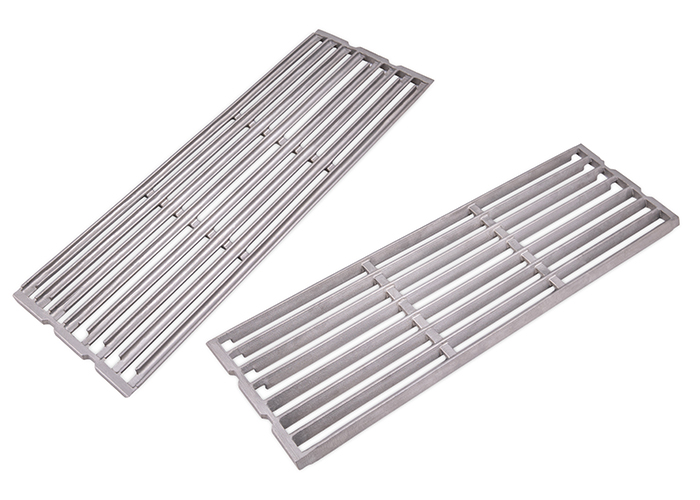

Grate Care
Now that we know a bit about the different types of grids let’s look at how to care for them. Regardless of the material, each of our cooking grates should be similarly cleaned and seasoned. The only difference is with cast iron, as it is imperative that they are seasoned well after each cook to keep them protected.
At Start Up


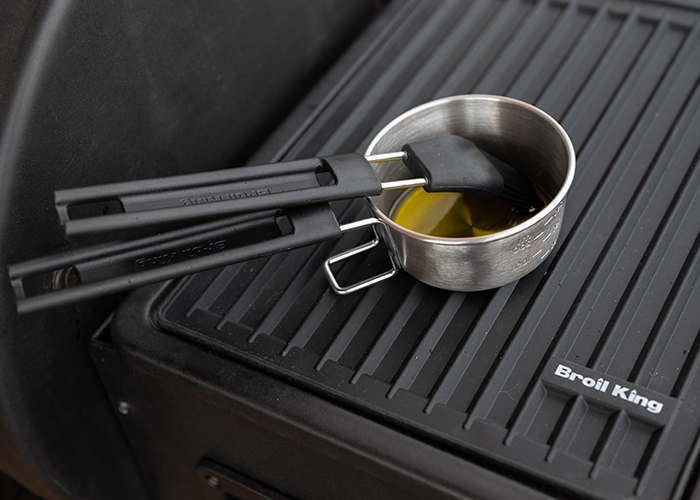

When you first fire up the grill, you should apply a generous layer of oil to your grates. This helps keep that protective barrier, but it will also prevent food from sticking. You can use a basting brush to do this or an oil spritzer.
Keep in mind the type of oil that you are using as well. Different oils have different smoke points. This means that they will burn off at varying temperatures, which could negate the protection that they provide, particularly if you’re cooking at high temperatures. It is better to look for an oil with a higher smoke point, such as safflower oil or rice bran oil. That said, with the regular application of any cooking oil, your grids should maintain a necessary layer of protection. Applying the oil is essential at the start of your cook to help prevent food from sticking to any of your cooking grids, and the most critical application for cast iron occurs at the end of your cook.
Cleaning
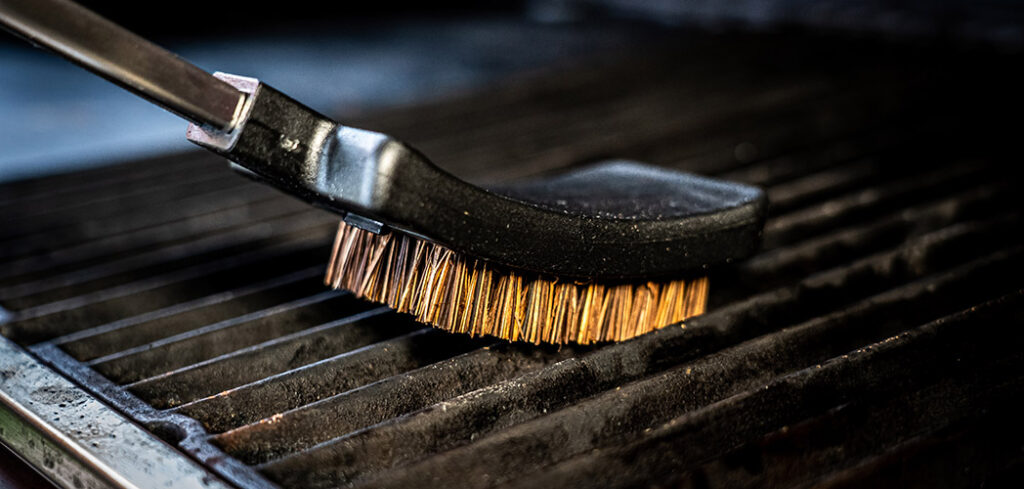

After you’ve finished grilling, the first step to clean your grids is to crank the heat up to full blast. This will help burn up food residue left on the grids so that you only have ash left to brush away. If you don’t turn up the heat, you’re going to end up transferring a lot of grease and grime onto your brush, making it harder to clean and meaning you’ll end up having to replace your grill brush more often.
Once you’ve burned off most of the debris, you can go in with your grill brush to remove the ash from the grids. You want to make sure you get in on all sides, front and back so that you have a clean surface for your next cook. The grill scrapper end on your brush can help get down in between the tines on your grates. If you don’t clean this off, it will transfer onto your next meal, which is very unsanitary.
Re-Seasoning
Now that you have a clean grill surface, the final crucial step to maintaining your grids is to season them. This step is particularly vital for cast iron, as we want to protect the grids from moisture in the air that could begin to break down and cause rust while they sit dormant. Seasoning involves baking the oil onto the grids (like how you might oil and then place a cast iron pan in the oven). You will have cranked the heat up before brushing your grill down. After cleaning, you can turn the burners down or even off, depending on how hot the grill has stayed. Then use an oil spritzer or basting brush to begin generously applying oil to each grid, hitting all sides. The heat held within the grids will bake on the oil, creating a protective patina.
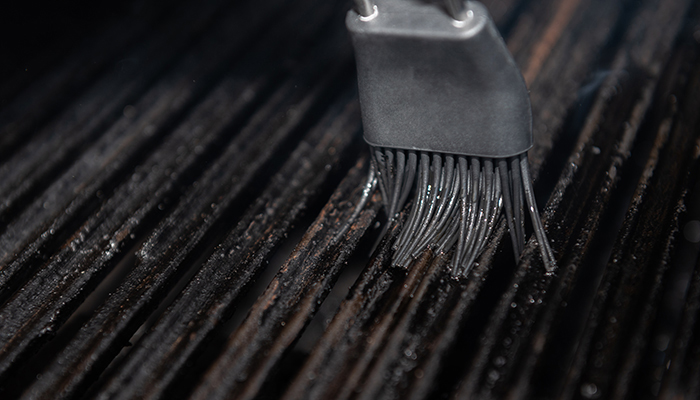

Final Thoughts
If you keep a regular habit of seasoning before each cook, burning off, cleaning, and seasoning at the end, your grids will look and perform well for years to come. Keep in mind, too, that the same maintenance steps apply to your other cast iron grillware, including griddles, roasters and woks.

